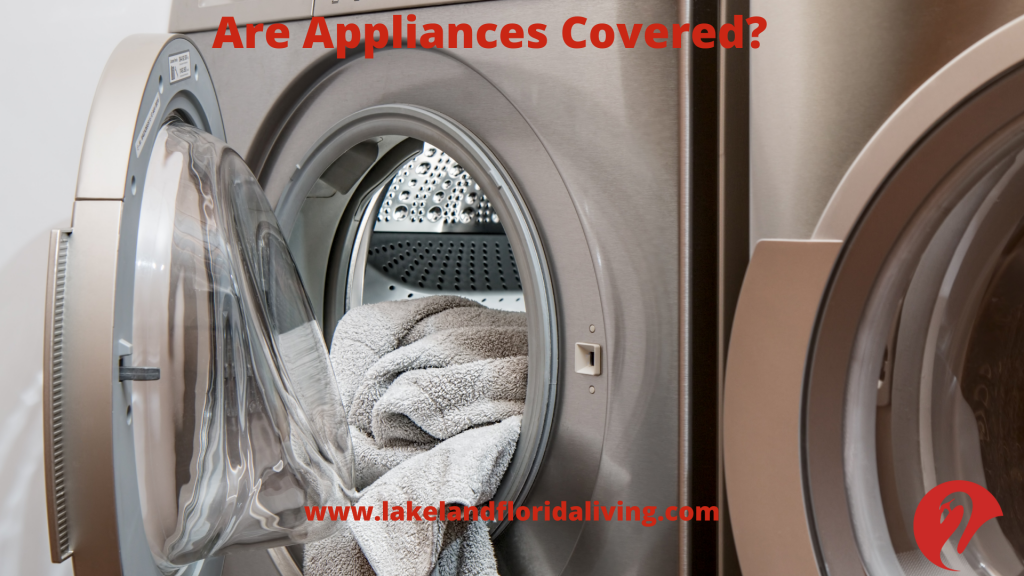Home warranties offer a kind of protection for your home that complements standard homeowner’s insurance. However, while this coverage can be extremely useful, it might also be a waste of money. The difference lies in the type of plan you choose and the reliability of the provider. Therefore, it’s essential to understand what exactly home warranty plans cover and what their limitations are. This way, you’ll be able to make the right decision on whether you should buy this kind of protection.
Home Warranty Benefits: How Does It Save You Money?
Home warranty plans help you save some money by paying for repairs of the items covered by the plan. Usually, those items include a variety of home appliances and systems that range from plumbing to a microwave.

If the homeowner has this plan, they contact the warranty provider if any of the covered items breaks. Then, the provider will send one of their affiliated repairmen or contractors to do the job. You file a claim and get a part or whole repair bill paid by the warranty provider.
This helps homeowners because this kind of approach saves you from big unexpected expenses. It’s also a great help for people who don’t want to spend a lot of time researching and comparing contractors in the area. The home warranty company is your one point of contact for all needs covered by the plan. This convenience definitely should be taken into account when you calculate the value of home warranty coverage for you personally.
On average, these plans cost between $400 and $600 a year. Their popularity is growing fast as is evidenced by the industry growth of 3.1%. Today it’s valued at over $2 billion and new companies keep appearing to create more competition on the market. This leads to the appearance of new plans that offer better coverage and cost less.
Overall, when home warranty works as it should, homeowners can use it to save money and time. But not everyone benefits from a home warranty plan. The coverage in some of them is extremely limited and some companies do not fulfill the obligations of the contract. There are also major issues with frequent claim denials and bad contractors.
Home Warranty Coverage: What Does It Really Cover?
There are several types of home warranty coverage and each plan offered by one of the 180+ companies is unique in its own way. However, the majority of solid and reliable plans are rather similar and provide coverage for:

- Plumbing
- air conditioning installation
- Essential kitchen appliances
- Fans
- Furnace
- Heating systems
- Boiler
- Washer and dryer
- Ductwork
- Garbage disposal
- Electrical systems
- Ovens
The majority of providers offer a basic plan that only covers the essentials and premium coverage that includes all of the above. Usually, they also offer an optional coverage option. This can be used to include items like a pool or hot tub into your home warranty plan as well.
For example, Select Home Warranty offers three types of coverage, Bronze, Gold, and Platinum, and has further diversified variations of each. The Bronze Care plan of the company covers only appliances while the Gold Care is good for home systems. The Platinum Care combines both and offers the most extensive and flexible coverage. On the other hand, Total Home Protection company, which also goes with the precious metal theme, offers only Gold and Platinum plans. The former covers plumbing and electrical systems as well as a wide range of appliances. The Platinum plan is the maximum coverage for all important home systems and appliances.
However, it’s important to understand that while it all seems like a great kind of protection, you need to remember that home warranty coverage is limited. Even if, on the surface, the plan includes all the aforementioned items and more, you need to study the exact terms and conditions of the contract. This is where you’ll discover that home warranty plans do not cover all types of breakdowns. In fact, many of them do not cover specific parts within the appliances that are technically included in the plan.
Incidentally, those might be the most expensive parts to replace or those “not covered” issues might be the most common problems for this type of appliance. As a result, the coverage that seems good on the surface might be a little more than useless for a homeowner.
Home Warranty Coverage Limits: Why Isn’t This Plan a Perfect Protection?
It’s not only the items and breakdowns and situations covered by a home warranty that matter in these policies. Of course, you need to consider all of them, which is why it’s essential to study the exact coverage list to the letter before you purchase the plan.
However, there is also another type of limit applied to home warranty coverage. It’s the payout limit, which is, arguably, even more important. That’s because this limit determines how much exactly the warranty provider will pay for the repair or replacement of the covered items. Everything beyond that will have to go out of your own pocket.
These monetary limits might be applied to a repair cost per item or for the plan as a whole. You’ll need to research average repair costs for every appliance covered by your plan as well as common problems that might occur. This way, you’ll be able to understand how much a breakdown can cost you and you’ll see whether the plan’s limit is sufficient to pay for these repairs.
Also, do not forget that home warranty companies send their own affiliated contractors to do the repairs. This is another type of limitation you’ll have to deal with. These contractors might not be the best and they might not offer the lowest rates. Therefore, even with the warranty covering a part of the bill, you might end up paying a hefty sum.
Note that some warranties explicitly exclude appliance replacement. Therefore, if you want to use this plan to replace some home appliances, you won’t succeed even if this option is included in the coverage. For a home warranty, it’s much more beneficial to pay small amounts for occasional repairs than to foot one big replacement bill. And contractors sent by the company will always prioritize its interests.
Also, for all that these plans can be useful and are popular, many people face some home warranty problems. They usually occur if the terms of the contract are tricky so the home warranty provider can use loopholes to deny your claims. Also, some companies outright do not fulfill their obligations. You can sue them in this case, but do remember that these businesses have a good legal team on payroll.
To avoid this kind of problem, you need to choose your home warranty provider very carefully. Never fall for the cheapest policy or seemingly best terms. You need to research the provider and its reputation thoroughly. With this coverage, it’s better to pay a bit more but to be confident that the plan will live up to your expectations when you need it.
Do You Need a Home Warranty?
You are the only person who can decide whether you need a home warranty. This coverage can offer some benefits, but it also comes with severe limitations. Which outweighs the other depends on your personal situation as well as the plan you consider buying.
A home warranty is definitely a good choice if you are planning to sell the house. According to surveys, homes with this coverage sell for more money (about $2,300), which is a big win considering that the average plan costs well below $1,000.
However, as a homeowner, you need to consider the condition of the appliances and systems you want to cover as well as your plans for the future. If you are going to make renovations or invest in new appliances soon, buying a plan to cover what you have now is a waste. And, as mentioned above, you won’t be able to “cheat” and use a home warranty to get old appliances replaced.
In fact, buying a home warranty plan to cover old appliances is, almost always, a waste of money. That’s because the provider will use the “pre-existing condition” clause in order to deny your claim. As old appliances and systems are high-risk, you won’t be able to get effective coverage for them.
On the other hand, if your home and appliances are new and in good condition, a home warranty can make sense. The most important thing, however, is to choose a plan with comprehensive coverage and reasonable payout limits.
Final Thoughts on Home Warranty
It’s essential to research both the plan and the company before you sign anything. A=Take your time to read the fine print of the contract and study reviews of every company available in your area.
Remember to take all reviews with a pinch of salt. However, pay attention to both independent opinions of experts on review platforms and customer opinions on forums like Yelp or Google Reviews. Also, check the company’s BBB rating and accreditation. And run a general Google search of the company to see if it has been associated with some major scandals.
No home warranty company will have a spotless reputation or a perfect plan. So, in the end, you need to decide whether potential benefits are worth your money.
What’s Next?
If you would like more information about buying or selling a home, please Contact the Lakeland Real Estate Group. We will answer all your questions and provide you will a free market comparison for your current and/or potential neighborhood so you know exactly how to proceed. Give us a call today, we’d love to show you how exciting home buying and/or selling can be.
Additional Home Warranty Resources
- Tips for Protecting Your Newly Bought House With A Home Warranty Danny Margagliano
- Home Warranty Cost & Understanding Home Warranty Policy – John Cunningham
- Why are Home Warranties on the Rise in Massachusetts on the Rise Today? Bill Gassett
____________________________________________________________________________________________________
About the author: The above real estate article “Home Warranty Coverage: What Exactly Do Home Warranties Cover?” was written by Petra Norris of Lakeland Real Estate Group, Inc. With over 20 years of combined experience of selling or buying, we would love to share our knowledge and expertise. Petra can be reached via email at petra@petranorris.com or by phone at 863-712-4207